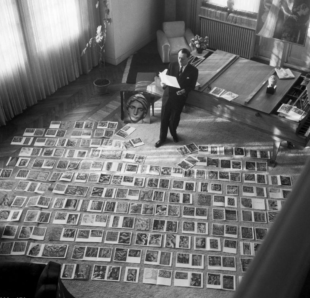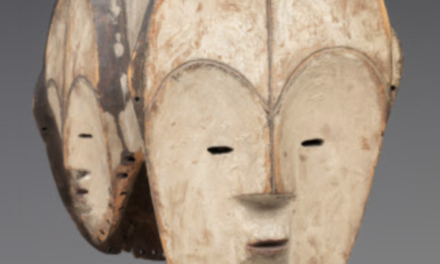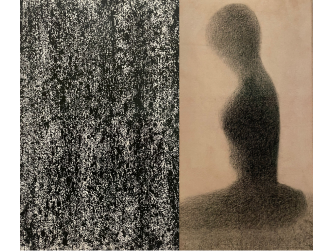
André Malraux
The highest idea of man
“The museum, after all, is one of the places that give us the highest idea of man (…) The role of museums in our relationship with works of art is so great that we can hardly conceive of the fact that they have existed here for less than two centuries (…)”. When the writer and future culture minister André Malraux, who would be the first to hold this office in France, published his famous text “The Imaginary Museum” (Le musée imaginaire) in 1947, he could never have foreseen that 70 years later the world’s major museums would be closing their doors. But that is what’s happening today. Each country is different in terms of specifics, funding models and reactions.
Philip Tinari, UCCA, Beijing

In Beijing, the American Philip Tinari (See Philip Tinari interview about the contemporary art scene) runs China’s most emblematic contemporary art museum, UCCA (Ullens Center for Contemporary Art), which is owned by a group of Chinese businessmen. He is known for staging ambitious exhibitions such as the first Picasso exhibition in China in June 2019 in collaboration with the eponymous Parisian museum, which attracted 350,000 visitors in just a little over two months.
Gallery Weekend Beijing
UCCA closed its doors on 24 January 2020 and will most likely reopen around 21 May, when Gallery Weekend Beijing is being organized in the vicinity, the 798 Art District.
Online concert
“Like everyone else, we’ve put activities in place on our website. But what was surprising was the success of our online concert on 29 February, which was watched by 4 million people.
Ryuichi Sakamoto

We presented a livestream of an improvised show which included performers like multimedia artist Feng Magbo along with the Japanese composer Ryuichi Sakamoto. The latter at one point was using a cymbal printed with the words “Made in Wuhan”. It ended on a message of hope that was greatly appreciated here.”
Philip Tinari hopes to exhibit the paintings of American artist Elizabeth Peyton on 27 June as scheduled, in collaboration with the National Portrait Gallery in London.
Bernard Blistène, Centre Pompidou, Paris, Shanghai

Bernard Blistene is not only the director of the Centre Pompidou, he is also in charge of the programming at the Centre Pompidou Shanghai (See Bernard Blistene interview about the Centre Pompidou Shanghai) inaugurated in November 2019 in the Chinese megacity. The latter institution is one of a small number of major museums in the world to have already reopened, on 20 March 2020. “There are evidently rigorous security measures in place with checks upon entry, a numerus clausus, reglementary distancing… Attendance will build back up again gradually.”
French cultural exception
In Paris, the head office of the Centre Pompidou benefits from what Blistene calls “the French cultural exception. We are seeing dramatic consequences in the United States for museums that are reliant on private funding.
Reinvention

In France, the current situation also demands a certain degree of reinvention. We are having to move towards new forms of production, we also have to work more with our own heritage and create exhibitions that are in tune with current events. But we have no intention of putting our present projects on hold. That said, several big events in our programme are linked to loans from the United States.
Charles Ray
We were due to stage an exhibition of the American artist Charles Ray in collaboration with the Pinault collection in Paris. The project has been delayed until 2021.
Matisse
We were also due to open a large-scale Matisse exhibition on 15 May 2020 to mark 150 years since the painter’s birth. I’d like to hope it will open in June 2020.” Like museums the world over, the Centre Pompidou is seeking new online formats and says it is receiving 16,500 visitors to their website a day, as opposed to 15,000 before the closure.
André Malraux

André Malraux envisaged the ideal museum as a place that brings together great artworks, but which also evokes, in the mind of the art lover, all the exceptional artworks that are not present. The 21st century gives a new dimension to this in the form of the online virtual museum.
Reinventing the online museum
It has never been so present, on our computer screens and in our heads, as during this period of confinement. But it must also be urgently reinvented in order to breathe a little sensuality into these reproductions, which are often accurate at best, but always remain cold and sterile. Because, fortunately for the survival of these manmade gems we call museums, nothing will ever replace the direct visual experience of a painting or a sculpture.
Realism
But let’s be realistic: for museums to be freely accessible once more, without social distancing between visitors, and without having to treat one another as a potential threat, it looks as though we will have a while to wait.
Donating=Supporting

Support independent news on art.
Your contribution : Make a monthly commitment to support JBH Reports or a one off contribution as and when you feel like it. Choose the option that suits you best.
Need to cancel a recurring donation? Please go here.
The donation is considered to be a subscription for a fee set by the donor and for a duration also set by the donor.





